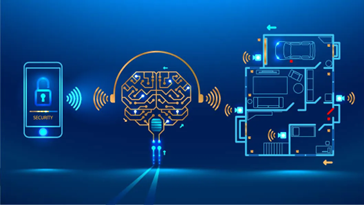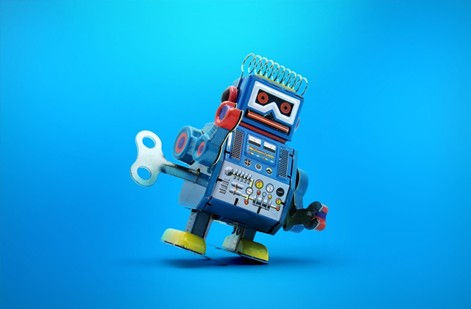Hacking Smart Toys: The Cybersecurity Risks of AI-Powered Children’s Devices
- Swarnali Ghosh

- Jun 5
- 6 min read
SWARNALI GHOSH | DATE: JUNE 04, 2025

Introduction: The Rise of Smart Toys and Hidden Dangers
In an era where artificial intelligence (AI) permeates every aspect of our lives, children’s toys have evolved far beyond simple dolls and action figures. Today’s smart toys—equipped with microphones, cameras, voice recognition, and internet connectivity—promise interactive, personalized play experiences. However, beneath their playful exteriors lurks a darker reality: these AI-powered devices are increasingly vulnerable to hacking, posing serious threats to children’s privacy and safety.
From Hello Barbie’s voice-recording controversies to GPS-enabled smartwatches leaking location data, cybersecurity experts warn that smart toys can be exploited by malicious actors for surveillance, identity theft, and even grooming. This article delves into the alarming risks of hacked smart toys, real-world incidents, and what parents can do to protect their children in an interconnected digital playground. In today’s digital age, the line between playtime and screen time has blurred. AI-powered smart toys—ranging from talking dolls to interactive robots—are becoming staples in children’s lives, offering personalised learning experiences and entertainment. However, beneath their friendly exteriors lie potential cybersecurity threats that can compromise children's safety and privacy.
The Rise of AI-Powered Toys
Smart toys are equipped with technologies like microphones, cameras, GPS, and internet connectivity. They can recognise voices, respond to queries, and even adapt to a child's behaviour over time. While these features offer educational benefits, they also open doors to potential cyber threats.
How Smart Toys Work—And Why They’re Vulnerable
Smart toys, part of the Internet of Toys (Io Toys), rely on AI, Bluetooth, Wi-Fi, and cloud storage to function. They collect vast amounts of data—voice recordings, facial recognition, location, and even behavioural patterns—to deliver personalised interactions. However, this very functionality makes them prime targets for cyberattacks due to:
Weak Encryption: Many smart toys transmit data without proper encryption, allowing hackers to intercept conversations or location data.

Default Passwords: Manufacturers often use generic login credentials, making it easy for cybercriminals to gain access.
Outdated Firmware: Toy companies rarely prioritise security updates, leaving devices exposed to known vulnerabilities.
Third-Party Data Sharing: Some toys send data to external servers, increasing the risk of breaches.
According to a 2021 analysis, nearly all data transmitted by Internet of Things (IoT) devices—including smart toys—lacks encryption, leaving them especially vulnerable to cyberattacks.
Real-World Incidents Highlighting the Risks
CloudPets Data Breach: In 2017, CloudPets, a line of internet-connected stuffed animals, suffered a massive data breach. Over 820,000 user accounts and 2.2 million voice messages between children and parents were exposed due to an unsecured database. Hackers even held the data for ransom, highlighting the vulnerabilities in toy data storage systems.
VTech Hack: In 2015, VTech, a company known for educational toys, experienced a cyberattack that compromised the data of approximately 6.4 million children and 4.8 million parents. The breach exposed names, addresses, photos and chat logs, raising concerns about the depth of personal information collected by smart toys.
My Friend Cayla: The interactive doll "My Friend Cayla" was found to have a security flaw allowing hackers to connect via Bluetooth without authentication. This vulnerability enabled unauthorised access to the toy's microphone, potentially allowing eavesdropping on children's conversations.
How Hackers Exploit Smart Toys
Smart toys, as part of the Internet of Things (IoT), can be exploited in various ways:

Unauthorised Access: Weak or non-existent authentication protocols can allow hackers to gain control over the toy's functions.
Data Interception: Unencrypted data transmissions can be intercepted, leading to the theft of personal information.
Remote Surveillance: Compromised cameras and microphones can be used to spy on children and their surroundings.
Manipulative Interactions: Hackers can send inappropriate messages or commands to children through the toy, posing psychological risks.
The Dark Side of AI in Smart Toys: Emerging Threats
Beyond data breaches, AI-powered toys introduce new dangers:
AI-Generated Child Exploitation Material: Predators are using AI to create deepfake child sexual abuse material (CSAM) from innocent photos kids post online. These fake images can be used for sextortion or grooming.
AI-Driven Grooming: Chatbots in smart toys can be manipulated to engage in inappropriate conversations with children. Hackers can use AI to mimic a child’s friend, building trust before exploitation.
Dataveillance: Profiling Kids for Life: Smart toys collect data that could later be sold to colleges, employers, or advertisers, influencing a child’s future opportunities without their consent.
The Ethical and Psychological Implications
Beyond technical vulnerabilities, smart toys raise ethical concerns:
Data Privacy: Children's interactions with toys are often recorded and stored, and sometimes shared with third parties without explicit consent.
Behavioural Influence: AI-driven responses can shape children's behaviour and perceptions, potentially leading to dependency on technology for social interactions.
Lack of Transparency: Complex terms of service and privacy policies make it difficult for parents to understand what data is collected and how it's used.
What Parents Can Do: Protecting Kids from Hacked Toys

While regulators struggle to keep up with technological advancements, parents can take proactive steps:
Research Before Buying: Check if the toy complies with COPPA (Children’s Online Privacy Protection Act) or GDPR. Avoid toys with always-on microphones or cameras.
Secure Home Networks: Change default passwords on smart toys and Wi-Fi routers. Use strong encryption (WPA3) for home networks.
Monitor and Limit Usage: Turn off toys when not in use to prevent unauthorized access. Regularly check for firmware updates.
Educate Kids on Digital Safety: Teach children not to share personal information with smart toys. Encourage skepticism about unexpected toy behaviors (e.g., talking unprompted).
Regulatory Responses and Recommendations
Governments and organisations are beginning to address these concerns:
Germany's Ban on My Friend Cayla: Citing the toy as an unauthorized surveillance device, Germany banned its sale and possession.
EU's General Data Protection Regulation (GDPR): Provides stringent guidelines on data collection and processing, especially concerning children's data.
Parental Guidelines: Experts recommend that parents regularly update toy firmware to patch security vulnerabilities. Disable unnecessary features like cameras or microphones when not in use. Use strong, unique passwords for toy-related accounts. Educate children about the importance of privacy and the potential risks of smart toys.
The Future: Can Smart Toys Be Made Safe?
Some companies are working toward ethical AI toys with:
Stronger Encryption & Security Patches: Enhances data protection by using advanced algorithms (e.g., AES-256) and frequent updates to fix vulnerabilities, preventing unauthorized access and cyber threats.
Transparent Data Policies: Clear guidelines on how user data is collected, stored, and shared, ensuring compliance with privacy laws (e.g., GDPR) and building trust with users.
Parental Controls: Tools allowing parents to monitor/restrict children’s online activity (e.g., screen time limits, content filters) for safer digital experiences.

Conclusion: Balancing Innovation and Safety
Smart toys offer exciting possibilities for learning and play, but their cybersecurity flaws cannot be ignored. From voice-recording dolls to GPS-trackable wearables, the risks are real—and often underestimated. As AI continues to evolve, so must protections for the youngest and most vulnerable users. Parents, manufacturers, and lawmakers must collaborate to ensure that the Internet of Toys doesn’t become the Internet of Threats. Until then, awareness and caution are the best defences against the dark side of smart playthings. While AI-powered toys offer innovative ways to engage and educate children, they also present significant cybersecurity and ethical challenges. It's imperative for manufacturers to prioritise security in the design phase and for parents to remain vigilant about the toys their children use. By fostering awareness and implementing robust safeguards, we can ensure that the benefits of smart toys don't come at the expense of children's safety and privacy.
Citations/References
De Paula Albuquerque, O., Fantinato, M., Kelner, J., & De Albuquerque, A. P. (2019). Privacy in smart toys: Risks and proposed solutions. Electronic Commerce Research and Applications, 39, 100922. https://doi.org/10.1016/j.elerap.2019.100922
The Internet of Toys: Legal and Privacy Issues with Connected Toys | Insights | Dickinson Wright. (2017, December 1). https://www.dickinson-wright.com/news-alerts/legal-and-privacy-issues-with-connected-toys
Morrow, S. (2025, April 3). Smart Toys and Their Cybersecurity Risks: Are Our Toys Becoming a Sci-Fi Nightmare? [updated 2021]. Infosec Institute. https://www.infosecinstitute.com/resources/iot-security/smart-toys-and-their-cybersecurity-risks-are-our-toys-becoming-a-sci-fi-nightmare/
The dark side of AI: Risks to children - Child Rescue Coalition. (2024, June 18). Child Rescue Coalition. https://childrescuecoalition.org/educations/the-dark-side-of-ai-risks-to-children/
(19) Harnessing AI for Enhanced cybersecurity measures: A focus on child safety online | LinkedIn. (2024, April 8). https://www.linkedin.com/pulse/harnessing-ai-enhanced-vcybersecurity-measures-focus-child-west-mbrkf/
Sahota, N. (2024, August 1). AI shields kids by revolutionizing child safety and online protection. Forbes. https://www.forbes.com/sites/neilsahota/2024/07/20/ai-shields-kids-by-revolutionizing-child-safety-and-online-protection/
Manson, M., & Manson, M. (2024, November 7). AI, Cybersecurity, and student online safety in the classroom: 3 essential Government resources. CTL. https://ctl.net/blogs/insights/ai-cybersecurity-and-student-online-safety-in-the-classroom-3-essential-government-resources
John. (2025, May 22). Warning: Your child’s smart toy transmits Bluetooth signals to 7 unknown devices. World Day. https://www.journee-mondiale.com/en/warning-your-childs-smart-toy-transmits-bluetooth-signals-to-7-unknown-devices/
Smart toys: Your child’s best friend or a creepy surveillance tool? (2025, June 3). World Economic Forum. https://www.weforum.org/stories/2021/03/smart-toys-your-child-s-best-friend-or-a-creepy-surveillance-tool/
Ians. (2024, January 27). AI apps, smart homes raise cybersecurity threats for kids: Report. The Economic Times. https://economictimes.indiatimes.com/tech/technology/ai-apps-smart-homes-raise-cybersecurity-threats-for-kids-report/articleshow/107187169.cms?from=mdr
Image Citations
Matthews, K., & Matthews, K. (2018, July 17). Parents are giving kids smart toys, and we don’t really know if that’s OK - TechTalks. TechTalks - Technology solving problems... and creating new ones. https://bdtechtalks.com/2018/06/29/smart-toys-kids-consequences-effects/
Staff, G. (2024, January 29). Can AI toys harm your kids? Gadget. https://gadget.co.za/aiharm1/
Inc, K. (2021, December 7). Children, Artificial Intelligence and Privacy Concerns. Where do We Stand Today? Medium. https://medium.com/@KadhoInc/children-artificial-intelligence-and-privacy-concerns-where-do-we-stand-today-74fb831d4d8
Not child’s play: Potential risks of smart toys explained. (2023, December 12). Temple Now | news.temple.edu. https://news.temple.edu/news/2023-11-29/not-child-s-play-potential-risks-smart-toys-explained




Comments